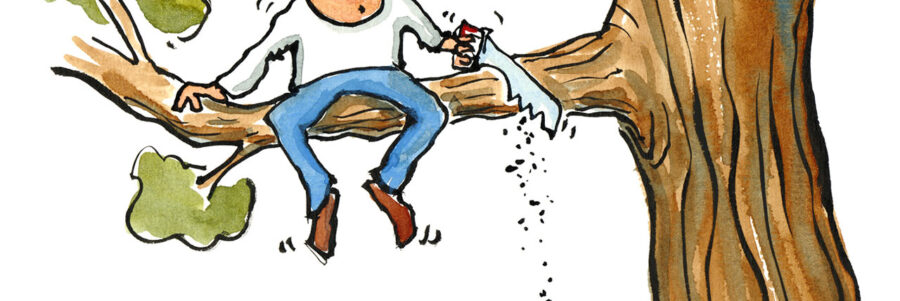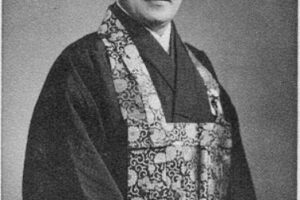February 2008

Nobody likes a quitter, and nobody wants to be seen as a quitter. Nonetheless, people begin and quit activities all the time. Including Zen. While one may be able to quit some activities, when it comes to Zen, it is not so easy. Zen is not like a hobby, something that one initiates or abandons at will. So in Zen, this “quitting” exists only in their own minds.
Recently I learned that one of our disciples had decided to “drop out.” This was preceded by a period of erratic attendance on the part of the young man. A conflict centering around another member of the community was mentioned as a possible source of discomfort and estrangement.
At the time, in dokusan interviews and individual discussions, I suggested that the parties to this conflict regard it as a form of suffering, in the Buddha’s original meaning of the term. Additionally, I encouraged each to look with particular compassion on their identified opponent as suffering more deeply than themselves, especially if the accusations of misbehavior were true.
Causing disharmony within the community is a serious infraction of the rules of conduct handed down through the lineage, more especially for disciples than for lay members. Of course, some degree of conflict is an inevitable consequence of a public practice. But this is not the subject of this commentary.
In the thirty-odd years that I have been involved in organized Zen practice, first at the Chicago Zen Temple and later at Atlanta Soto Zen Center (ASZC), I have seen many hundreds, perhaps thousands, of people come and go — lay practitioners as well as trainees and teachers. My teacher, Matsuoka-Roshi, used an expression in reference to more than one disciple and member, “Come-and-go type…come-and-go type”. This was probably less a criticism than a statement of fact. I took it as an admonishment, to not be a “come-and-go type.”
I would often find myself in the awkward position of the proselytizer, the “good shepherd attending the flock.” In Zen, of course, it is more like herding cats.
Zenkai Taiun Elliston, Roshi
In the early years of ASZC, when the group was relatively small, if an individual suddenly “disappeared” from attendance, it would occasion much asking-of-questions and raising-of-eyebrows. Pointedly directed to me.
Someone would somberly ask, “Have you seen so-and-so?”
I would say, “No, not since such-and-such…”
They would say, “Have you called (him or her)?”
I would say, “No…do you think it would be a good idea?”
This was rather clearly the implication. In at least one case the person asking replied with conviction, “Yes,” because at one time I had called him, expressing concern, and it had made a difference, to him at least.
And so, occasionally I would follow up and call individuals, just asking how they’re doing, that I hadn’t seen them for some time, sometimes on the pretext of some other issue that I wanted to raise with them. Sometimes I am genuinely worried about them.
I noticed that their response usually had a vague but certain undercurrent of “guilt.” They would mention their not having been at the center for some time, that they felt bad about it, and would usually volunteer earnest promises that they would see me soon at the Zen center. This dialog takes place mostly by email these days, which is less intrusive.
I would often find myself in the awkward position of the proselytizer, the “good shepherd attending the flock.” In Zen, of course, it is more like herding cats. This in turn would prompt me to reassure the person that attendance at the center was not the critical issue, that we are not a church, and so on, the whole conversation being rather predictable. Usually there did not seem to be a specific urgent issue, on their part, that could or should be addressed by my calling them. And it felt like an imposition on my part, though a friendly one.
It soon occurred to me that the best approach might be to simply leave people alone. Later, this intuition was reinforced by my learning that Sokei-An, the founder of the Zen Institute of New York, had a plaque displayed on his wall that said, “Those who come here are welcome…those who leave are not pursued.”
I took this as a good guide to the attitude toward offering Zen training. It also seems to agree with the Buddha’s proscription against aggressively proselytizing, or intentionally converting individuals, which in the India of his time meant the abandonment of family. While the consequences of an individual converting to Zen today cannot compare, still we cannot take this issue lightly.
A more primary ethical consideration is that to engage in a religious or moral crusade is of necessity to demean the innate spirituality of the targeted converts. That we all have the potential to realize this innate spirituality, or Buddha nature, is one of the bedrock tenets of Buddhism.
Thus, to pursue a member of the “flock” whose faith seems to be wavering is likely to be misguided: it presumes that the pursuer enjoys a spiritual advantage over the pursued. It also assumes that there is one correct form to the practice, whereas the practice of the Zen way is ultimately formless.
The essential quality of the formlessness of Buddha’s teaching is summed up in the expression, “No Path”, from the Heart Sutra. That is, even the Buddha’s first sermon, known popularly as the Four Noble Truths, including the Noble Eightfold Path, is provisional. These teachings are guidelines by which to reorient one’s approach to understanding existence “from the outside,” so to speak, in order to come to the same awakening experience that the Buddha had, “from the inside”; which experience was the source of his understanding, expressed initially in his first sermon.
The Supreme Vehicle, Buddha’s “highest teaching”, includes the reminder that all teachings, including those of Buddha, are inherently provisional. The truth is to be directly apprehended in “Emptiness”, not in doctrine. This is the central message of the brief Heart Sutra that we chant in daily liturgy.
To attempt to persuade or dissuade an individual in a spiritual-life decision is to forget, or ignore, this humble but simple truth. The more appropriate response is to simply make a bow in recognition of one’s own limitations in perceiving the great “formless form” of the buddhadharma.
There’s an old saying that there are three kinds of doctors. The first diagnoses the medical problem, identifies the disease, and prescribes a course of action to effect the cure. From that point on, it’s up to the patient to follow the advice: the “word-to-the-wise” school. The second kind of doctor not only diagnoses and prescribes, but makes a very sincere effort to persuade the patient that s/he really must follow through on the advice. This might be called the “insistent, really-caring” school in doctor-patient relationships. The third doctor not only is very insistent and persuasive, but climbs up on the patient’s chest and forces the prescription down the patient’s throat if need be. The “determined, I know-better-than-you” school. Which is most compassionate?
Sometimes peoples’ expectations of the teacher-student relationship are like this. When a disciple/trainee “drops out” or quits, it has the appearance of the abrogation of a relationship. The teacher-student relationship has been “broken”, with attendant feelings of betrayal of trust. But consider those aspects one can trust or distrust in another. There is competency, commitment, judgment, honesty, and motivation, each of which may be an object of trust or mistrust. A teacher may have a weakness in any or all of the above.
One truth of the nature of the teacher-student relationship was illustrated by the Buddha in his response to a follower, who insisted that unless the Buddha explained the “Ten Unanswered Questions”, that he could or would not accept Buddha as his teacher. These ten unanswered questions, such as whether the universe has a beginning or end; whether the individual exists in Nirvana; whether there is a transmigrating self; whether consciousness has beginning or ending; were defined by the Buddha as questions that “do not catch the limit.” That is, they are beside the point — they have little to do with what we as human beings and as students of the dharma really need to know. Even if answerable, the answers would not contain the knowledge we need to act upon in the conditions of our present, everyday lives. Buddha considered them idle speculation, not conducive to the awakening of the mind of enlightenment, or simply misguided, any answer to which would be one-sided.
Buddha told this misguided young man that he recognized no obligation to him to be his teacher, let alone to perform in some way as to meet his expectations; and that the young man likewise was under no obligation to the Buddha to be his student. In this way, the Buddha characterized the all-encompassing freedom, and individual responsibility, of his teaching, and of Zen in particular.
All that aside, can you really “quit Zen”?
Consider: when did you first start Zen practice? Maybe when you read the first book. So you think to yourself, “When I read this book, I first became interested in Zen — that’s how I got into it.” My teacher said this about books about Zen: the book is like a stone used to knock on the gate; when the gate opens, the stone is tossed aside. This is the beginning of true practice, opening the “gatelesss gate.” But what lead you to read the book?
I, personally, had an almost preternatural respect for Zen, long before I met Sensei. Perhaps it came from reading a book, but it seems my attitude about Zen preceded even that. As a child, I performed various yogic practices, showing off to my grandmother, with no prior knowledge of yoga. Just doing what comes naturally.
The notion that we begin Zen practice at some discrete point in time is analogous to the concept of conception — that life begins at some discrete point in time. When we examine this idea closely, however, we find that it is impossible to pinpoint exactly when our life began. There is conception: the egg coming out of the ovaries, the sperm entering the uterus, the egg being penetrated by the sperm, the subdivision into two, then four, then eight; the time in the womb, the water breaking, the head coming out, the umbilical cord being cut, and so on. Where is the exact moment when something new came into the universe?
If one can convince oneself that there was a specific time at which you began your spiritual training, your Zen practice, then you can also convince yourself that there can be a specific time when you can quit. If you can convince yourself that there is an exact moment of birth, then you are probably convinced of an exact moment of death. Both are a subject of intense, politicized debate, in the medical profession. No one knows for sure.
Similarly with the relationship to the teacher. One can say, “Well, I haven’t quit my spiritual training, but I stopped practicing Zen with that teacher.” But relationships are not one-sided, any more than birth and death is one-sided. My relationship to my teacher is not separate from his relationship to me. And my relationship to members of the Zen center, including disciples, is not separate from theirs to me. My life is not separate from theirs, and my practice is not separate from theirs. If they “quit”, aspects of our relationship continue to inform my practice; their effect on my practice has certainly not ended. And they can never forget their fortuitous exposure to the Teaching.
My position is that you can’t quit Zen because you can’t begin Zen. We don’t initiate anything new when we first sit down to do zazen (sitting Zen). We simply rejoin the universe in its practice of meditation. We re-enter the Samadhi that already obtains. We don’t quit doing Zen when we get up from our sitting position; we simply re-enter the world of action, which we never really left.
I encourage any and all of you who have been playing such “mind-games” with your practice to follow the ancient advice — throw it away!
“If you have a stick I will give it to you — if you don’t, I will take it away!”









